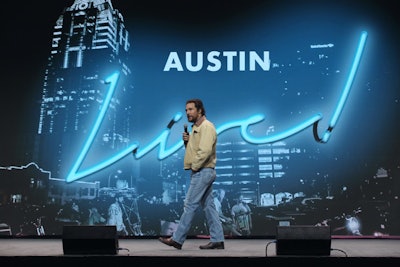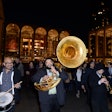
“Please stop designing content for events and start thinking about designing events for the content.”
That was the message from Sourabh Kothari, director of advocacy, brand, and content for Signifyd, during a session at the Professional Convention Management Association’s Convening Leaders conference, which took place Sunday through Wednesday at the Austin Convention Center. During his session Tuesday morning, Kothari shared why content is the most critical aspect of face-to-face events, the value of sharing that content with people who don’t attend, and ways to create content that will have value beyond the event. Here are some of his key points.
1. The content of your event—what will be discussed and who will be discussing it—is often the most important factor. It's most important for people deciding whether to attend an event, whether to sponsor an event, or whether to invest in an event.
2. The content should drive the design or “packaging” of the event. That packaging, for example whether an event takes place only in-person or whether there is an online component, needs to change over time to meet audience needs.
3. In order to get the content right, planners need to understand the audience’s intent. “Before you have your sales pitch—what you want to tell the world, what you want attendees to come to a location and be trapped for two to five days to listen to—I think it’s polite in most societies to understand what they want. That’s what we call intent,” he says.
4. To create content the audience will embrace and want to share, planners should begin from the perspective that the audience owns the content. “That’s a fundamental shift. It’s not our content. It’s our opportunity to create content, but it’s the audience’s content,” he says. “Think about how you design agendas today. How much of it is designed by your audience? How much of it would your audience say, ‘I loved that,’ as opposed to, ‘Tell me again what that is, why should I partake of this content?’”
5. Design content not just for the in-person and online audience, but also for the people who never attend your events. “The people not going to your event are still paying your paycheck. They pay to engage with your brand,” he says. “The content created at events is a gold mine for brand engagement as long as you are willing to share.”
6. One of the most effective tools to share content is video. Kothari says video can be used to capture testimonials, offer product demonstrations, share thought leadership, and more. He suggests planners try to record videos using a neutral background and without referencing the event, so the video will have broader interest and shelf life.
7. Transcribe videos and share the text on a blog or website. “Don’t just send it out as video. Transcripts do really well. Some people might find you when they search for the content because it’s written,” he says. There are both free and paid transcription services that can provide this function overnight.
8. Traditional event “sizzle reels” are ineffective. He says sizzle reels that show images of the location, entertainment, crowds, and food don't work because they all look the same. “I haven’t learned a damn thing about your event from that video,” he says. Instead, Kothari suggests planners create a brief video that includes no more than two key points from the opening keynote speaker, one point from the closing speaker, and two insights from the most interesting breakout sessions. “Now you have five points, 30 seconds each, to make a video. Summarize your event in under two minutes. And when you get good it will be under a minute, and it will get shared a lot."



















